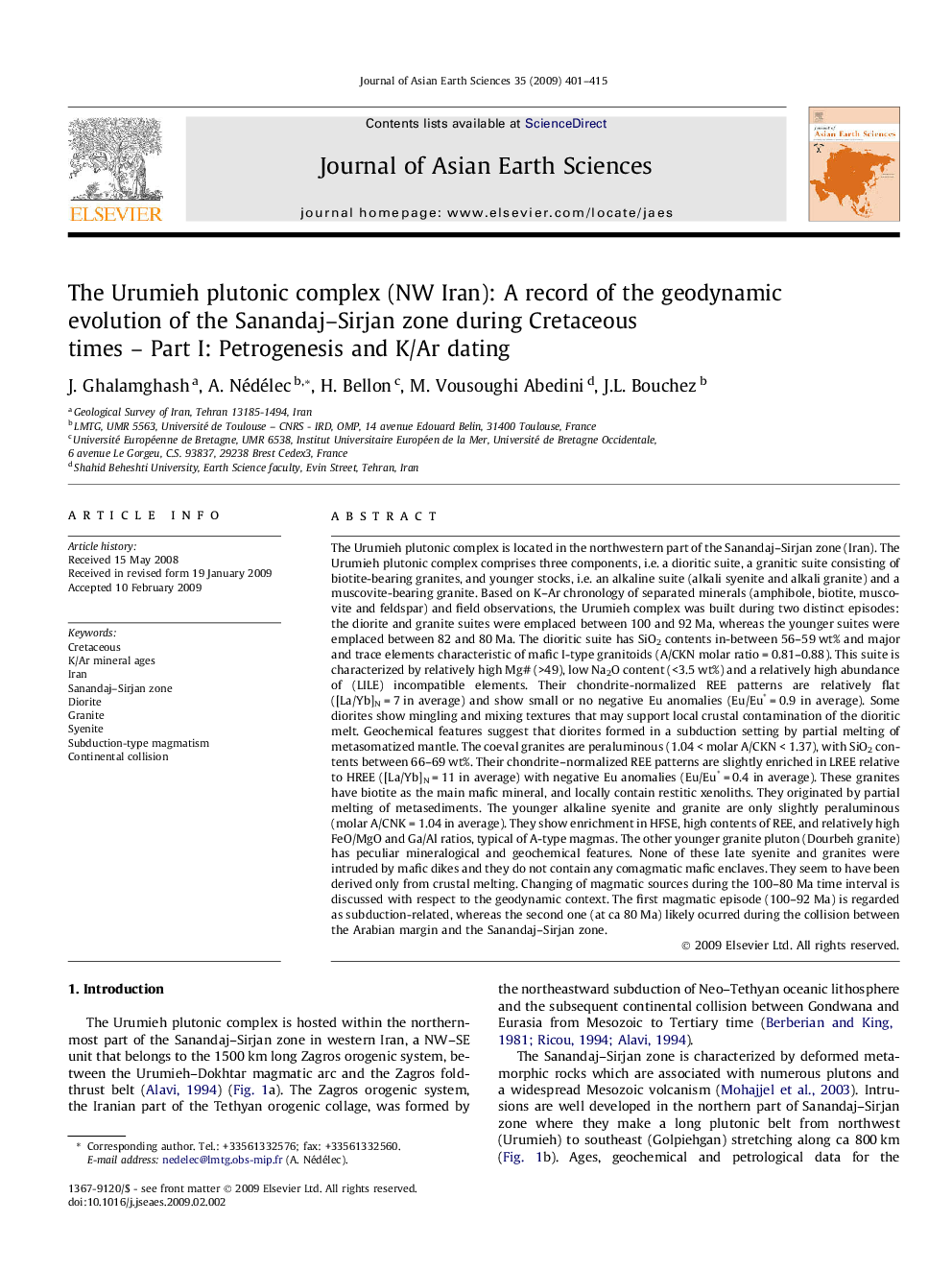| Article ID | Journal | Published Year | Pages | File Type |
|---|---|---|---|---|
| 4732123 | Journal of Asian Earth Sciences | 2009 | 15 Pages |
The Urumieh plutonic complex is located in the northwestern part of the Sanandaj–Sirjan zone (Iran). The Urumieh plutonic complex comprises three components, i.e. a dioritic suite, a granitic suite consisting of biotite-bearing granites, and younger stocks, i.e. an alkaline suite (alkali syenite and alkali granite) and a muscovite-bearing granite. Based on K–Ar chronology of separated minerals (amphibole, biotite, muscovite and feldspar) and field observations, the Urumieh complex was built during two distinct episodes: the diorite and granite suites were emplaced between 100 and 92 Ma, whereas the younger suites were emplaced between 82 and 80 Ma. The dioritic suite has SiO2 contents in-between 56–59 wt% and major and trace elements characteristic of mafic I-type granitoids (A/CKN molar ratio = 0.81–0.88). This suite is characterized by relatively high Mg# (>49), low Na2O content (<3.5 wt%) and a relatively high abundance of (LILE) incompatible elements. Their chondrite-normalized REE patterns are relatively flat ([La/Yb]N = 7 in average) and show small or no negative Eu anomalies (Eu/Eu∗ = 0.9 in average). Some diorites show mingling and mixing textures that may support local crustal contamination of the dioritic melt. Geochemical features suggest that diorites formed in a subduction setting by partial melting of metasomatized mantle. The coeval granites are peraluminous (1.04 < molar A/CKN < 1.37), with SiO2 contents between 66–69 wt%. Their chondrite–normalized REE patterns are slightly enriched in LREE relative to HREE ([La/Yb]N = 11 in average) with negative Eu anomalies (Eu/Eu∗ = 0.4 in average). These granites have biotite as the main mafic mineral, and locally contain restitic xenoliths. They originated by partial melting of metasediments. The younger alkaline syenite and granite are only slightly peraluminous (molar A/CNK = 1.04 in average). They show enrichment in HFSE, high contents of REE, and relatively high FeO/MgO and Ga/Al ratios, typical of A-type magmas. The other younger granite pluton (Dourbeh granite) has peculiar mineralogical and geochemical features. None of these late syenite and granites were intruded by mafic dikes and they do not contain any comagmatic mafic enclaves. They seem to have been derived only from crustal melting. Changing of magmatic sources during the 100–80 Ma time interval is discussed with respect to the geodynamic context. The first magmatic episode (100–92 Ma) is regarded as subduction-related, whereas the second one (at ca 80 Ma) likely ocurred during the collision between the Arabian margin and the Sanandaj–Sirjan zone.
